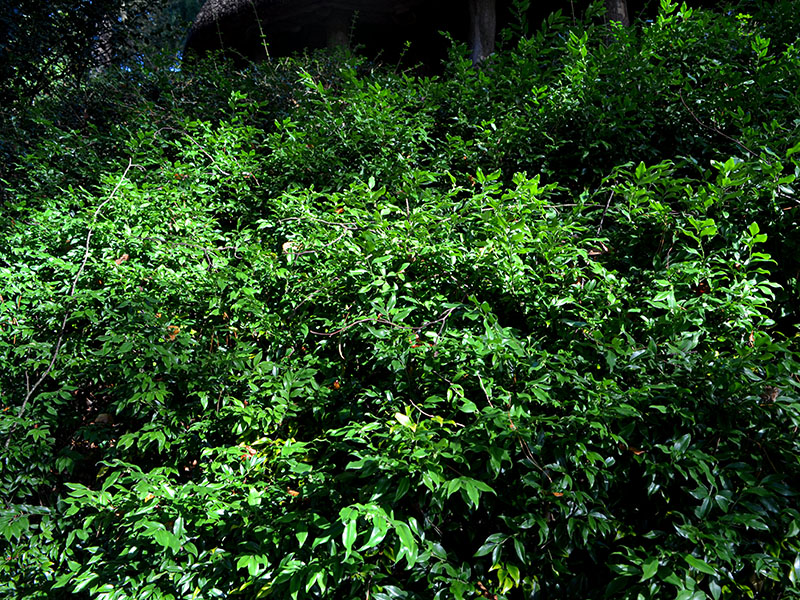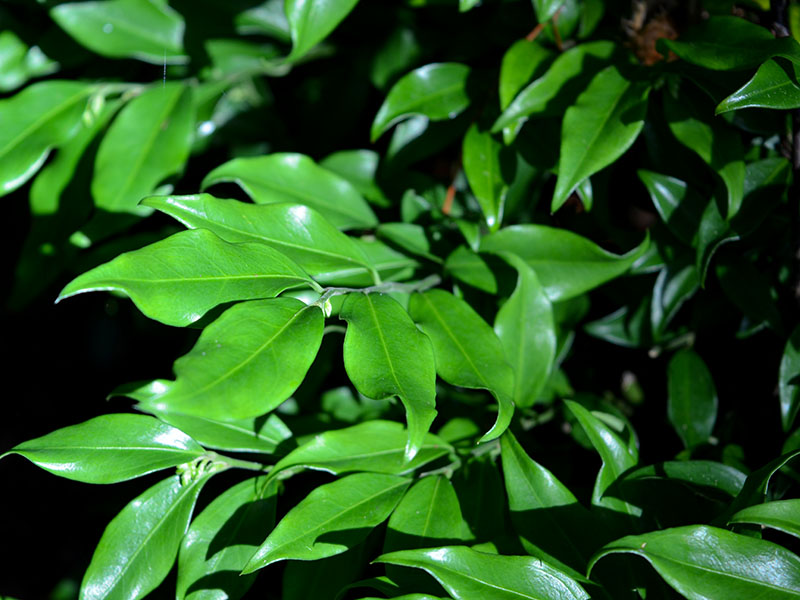
Woody > Sarcococca > Sarcococca confusa > Sarcococca confusa
Sarcococca confusa
sweet box
Origin: Originally from Eastern and Southeastern Asia, as well as Himalayas, and introduced in 1916.
Mike's
Opinion


"
The Sweet Box is a compact, dense evergreen shrub with attractive and lustrous dark green leaves. It produces gorgeous tiny creamy-white petaled flowers that bloom around mid-winter and fill the air with an outstanding scent, followed by attractive black fruits that are small and glossy. Since no insects or diseases plague this plant, it could be a great choice in the landscape near walkways or front doors so that you can enjoy its beauty and sweet fragrance in late winter.
Michael Pascoe, NDP., ODH., CLT., MSc. (Plant Conservation)
"
| Family |
| Buxaceae |
| Genus |
| Sarcococca |
| Species |
| confusa |
| Category |
| Woody |
| Type |
| Shrub (evergreen) |
| USDA Hardiness Zone |
| 6 - 8 |
| Canadian Hardiness Zone |
| 6a - 8a |
| RHS Hardiness Zone |
| H4 - H6 |
| Temperature (°C) |
| (-21) - (-9) |
| Temperature (°F) |
| (-5) - 15 |
| Height |
| 1 - 1.5 m |
| Spread |
| 1 - 1.5 m |
Photographs
Description and Growing Information
Flowering Period
| General Description |
| It is an evergreen shrub that is widely cultivated for its glossy evergreen foliage and intense honey-scented flowers. Clusters of small white flowers appear in mid-winter, followed by small, glossy black fruits. Besides the glossy characteristic, the leaves are leathery, dark green, elliptical to lance-shaped, and they are pale underside. |
| Landscape |
| According to the Cambridge University Botanic Garden, all the Sarcococca genus make valuable specimens for floristry. Furthermore, it is great in mass plantings and as a single specimen mixed with other broadleaf evergreens. The Royal Horticultural Society suggests planting it in city and courtyard gardens, cottages, and informal gardens, as well as planting it as a hedging or screen. |
| Cultivation |
| It can grow in chalk, clay, loam, and sand soils, with soil pH acid, alkaline, or neutral. The plant requires deep shade to partial shade. The Royal Horticultural Society claims that it grows in moderately fertile, moist but well-drained humus-rich soil in shade, and that full sun may be tolerated when planted in damp soil. When it comes to tolerance, this plant is resistant to atmospheric pollution, dry shade, and neglect; however, it needs protection from wind. |
| Shape |
| It has pliable branches that form a beautiful arching shape. |
| Growth |
| Slow |
| ID Characteristic |
| It has dark olive-green, splaying stems and lustrous black-green leaves. Each leaf is 2.5 to 6 cm long with an undulating surface and margin. It is an evergreen shrub that develops clusters of cream flowers that are very fragrant in mid-winter, followed by glossy red berries that ripen to black. Furthermore, the plant has a loose form in youth, densely branched becoming rounded with age. |
| Pests |
| The plant is generally free of pest and disease problems, and is resistant to damage by deer. |
| Habitat |
| Natural habitats include damp wood and dense forests in western China, the Himalayas, and the mountains of Southeast Asia. |
| Bark/Stem Description |
| The plant is composed of upright, arching green stems clothed in small, glossy, dark green leaves. Its stems grow outward from central woody branches, and its pliable branches form a beautiful arching shape. |
| Flower/Leaf Bud Description |
| The flowers are crowded into short clusters of typically three male flowers, and one to three female flowers. Small, white, and fragrant apetalous flowers emerge in February and March and maintain their effectiveness for four or more weeks. |
| Leaf Description |
| The leaves are alternate, simple, evergreen, elliptic-lanceolate to obovate, 2.5 to 6 cm long, 1.2 to 2.5 cm wide, entire, lustrous green above, light green below, surface undulating; petiole is 0.6 cm long. |
| Flower Description |
| It produces small, very fragrant and white petal flowers in late winter. The female flowers have either 2 or 3 stigmas, and fruits turn red and finally glossy black at maturity. This plant should be pruned shortly after flowering, which will force the growth of new stems that will flower the following winter. |
| Fruit Description |
| At first, fruits are red, shiny, oval, 8 mm long, and then the red fruit changes to black and matures in fall and lasts into spring. |
| Colour Description |
| The leaves are lustrous dark black-green. The plant has a dark olive-green, splaying stems. It produces creamy-white flowers, followed by glossy black berries. |
| Texture Description |
| Medium texture that blends into the landscape. This plant is a compact evergreen shrub with simple, leathery leaves and tiny, fragrant creamy-white flowers. |
| Notable Specimens |
| Trebah Gardens, Mawnan Smith, Nr Falmouth, Cornwall. Oregon State University, Corvallis, Oregon, United States of America. North Carolina State University, Raleigh, North Carolina, United States of America. University of Washington Botanic Garden, Washington, United States of America. Cambridge University Botanic Garden, Cambridge, England, United Kingdom. |
| Propagation |
| This plant can be propagated by semi-hardwood cuttings in late summer or propagated by seed sown in containers outdoors in autumn or spring. When it comes to propagation with seeds, you can sow seeds using fertile soil with lots of organic matter outdoors in cold frame in the fall, or directly in the garden in the spring. It's possible to start seeds indoors several weeks before the last threat of frost at the end of winter or beginning of spring. You should keep the soil moist and wait to transplant the plants outdoors until the seedlings are actively producing new growth. To propagate with cuttings, select semi-hardwood sections of the stem in the late summer. The cuttings should be at least 12.5 to 15 cm long, and contain several sets of leaves. Remove the lower leaves and dip the tips in rooting powder since it helps the cuttings take root quicker, and then place the cuttings in individual 10 cm pots containing rich soil with good drainage. Finally, after the plants take root and start producing new growth, transplant outdoors. |
| Ethnobotanical Uses (Disclaimer) |
| The members of Sarcococca plants are used as traditional Chinese medicine and traditional folk medicine for the treatment of stomach pain, rheumatism, swollen sore throat and traumatic injury. Several species of this genus, by previous investigations, indicated that steroidal alkaloids are the major chemical components with a broad spectrum of biological activities, such as cholinesterase inhibition, antitumor, antibacterial, among others. |


